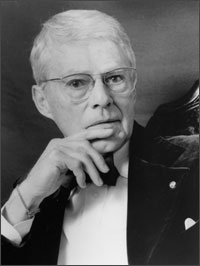Articles for New Music Box written by Alice Shields
Saving the Earth-Artist/Activists for the Environment
Timbre, Envelope and Variation in Electroacoustic Music
Electroacoustic Music with Video: Comparison with Sound for Film
Structural and Playback Issues in Current Electroacoustic Music
Papal Ploys by Alice Shields
Published in the journal "21st Century Music"
Click here to read the entire article. (2.6 MB PDF)
Criseyde — A Feminist Opera by Alice Shields
Originally published in the Journal of the International Alliance of Women in Music
Click here to read the article. (5 MB PDF)
Jack Beeson (1921-2010): Composer, Teacher, Advocate, and Born Satirist
NEWMUSICBOX, The Web Magazine from the American Music Center
 "Jack was my teacher in graduate school and beyond. I could say much about his operatic compositions and how he helped me with mine. But right now, as he has just left us, I want to remember him and share with you a few of my experiences with him.
"Jack was my teacher in graduate school and beyond. I could say much about his operatic compositions and how he helped me with mine. But right now, as he has just left us, I want to remember him and share with you a few of my experiences with him.
"In 1996, I ran across Jack in the crowded M104 bus as it moved slowly up Broadway. There was only standing room. As we chatted, hanging on to whatever pole was nearby, Jack told me that long ago, while I was still a graduate student, he and the president of Columbia University were intent on buying the Manhattan School of Music, so that Columbia could have a full conservatory for training students in music.
"Well," I said, "What a boon that would have been for us Columbia composers who would have actually been able to hear the music we were composing, especially the orchestral music and the operas. Why did this not happen?"
"Because," he said, with the crisp elocution and millisecond delay of an actor, "the then-chair of the music department, a conductor [whom he named], was afraid he would lose too many members of his own university orchestra." This outrageous revelation was only one of Jack's many delicious stories, in which the curtain of unknowing was pulled away and truth, of a sort, revealed, much to his sharp-eyed delight and to my own amusement and appreciation for his unending involvement in the committees and positions of power within music."
Click here to read the entire article
NewMusicBox asks: Can music for dance stand alone?
NEWMUSICBOX, The Web Magazine from the American Music Center covering American New Music
"In response to the question of writing stand-alone music for dance, I would say first that yes, I compose my music for dance so that it will also work as an independent piece of music. In exploring my thoughts on how I do this while at the same time writing what I believe are effective works for dance, I find I have to first clarify for myself the issues in writing for dance in general.
"The challenge in writing music for dance, as I see it, is to leave psychological and sensory 'space' in the music in which the dance can maintain its own power and presence. The establishment and maintenance of this psychological and sensory space requires the careful manipulation of density in several sound parameters, in particular the control of:
- vertical density (the presence or absence of chordal structures and the vertical distribution of their components)
- horizontal density (the presence or absence of contrapuntal melodic and rhythmic material)
- regularity of occurrence (the presence or absence of meter)
- frequency of occurrence (tempo)
- volume density
"High density in any of the above brings the music into more prominence; high density in all of the above means that all of the psychological and sensory space is being used by the music at that point, and that the dance at that moment will likely seem, at best, unrelated to the music, or at worst, will seem irrelevant, artistically impotent.
"The control over these parameters is even more important when it comes to electronic sounds, where the composer's almost too-easy access to overwhelming volume and timbre requires a developed sense of restraint in order to maintain musical structure alone, much less providing the psychological space to which I have been referring. For example, in one of my early electronic works for dance (Domino for the Mimi Garrard Dance Theatre in 1967) I did not resist the impulse to blast away on stage in huge sounds created from sampled thunder. Eventually Mimi Garrard, the intelligent and talented choreographer, simply lined the dancers up on the back wall of the stage and had them stand there while I indulged myself in these furious sounds on the tape. Although Mimi turned even this to good effect, I had left no 'space' for the dance.
"So now that I have explored what I think the issues are in composing effective music for dance, I can ask myself what the issues are in writing effective music for dance that is also a standalone, effective musical piece for the concert hall or CD recording. And here's my thought: it is overall form. In a moderately effective work on stage, either the music or the dance may bear the overall structuring function, creating the formal, sectional changes of the piece. In a truly effective work on stage, I believe the forming function is equally borne by the music and the choreography. In such a piece, the music can stand alone without the dance, for its formal structure is strong, just as that of the dance was. The creation of such a work requires, of course, a good aesthetic and working relationship between composer and choreographer.
"So it seems to me that an effective piece of music for dance which will also stand alone as a piece of music not only provides the necessary psychological and sensory space for interaction with the dancers (which makes it at least an effective accompaniment to the dance), but also has a highly developed formal musical structure as well.
"Although I was aware while working on my computer piece Dust that I was creating music which would be happening on a stage along with dancers, I deliberately composed the formal structure of the music so that it could later stand alone and be played by itself, either on concerts or on a commercial recording. Dust (2001) was commissioned by Dance Alloy of Pittsburgh and is a collaboration between me, choreographer Mark Taylor of Dance Alloy, and choreographer Anita Ratnam of the Arangham Dance Theatre of Madras, India. It is performed by two dancers from Dance Alloy and two traditional Bharata Natyam dancers from the Arangham Dance Theatre. The full 30:39 minute version of the music of Dust works on its own without the dance, but for practicality's sake I also created a 12-minute concert version.
"One of the pleasures for me of working on Dust with choreographer Mark Taylor was being able to use the difficult rhythms of Bharata Natyam with both Western and Indian dancers. After brief consultations at the beginning of my collaboration with choreographers Mark Taylor and Anita Ratnam, I suggested that the overall dramatic form of the work be based around the Tibetan Chöd ritual first described by the intrepid Victorian adventurer-scholar Alexandra David-Neel. Mark and Anita agreed, and I then created the musical structure by which this ritual would be expressed, basing the musical form on the Bharata Natyam dance form known as Tillana. I used two North Indian ragas — Madhuwanti raga and Todi raga — and four traditional Bharata Natyam jethi-s (South Indian rhythmic sequences). Created on ProTools with GRM plug-ins, I used as timbral sources Tibetan trumpets, Tibetan ritual conch shells, Indian drums and an Indian singing voice. I finshed the music and sent it to Mark on CD, so that he could begin choreographing the piece."
Click here to read the entire article.
Patient and Psychotherapist: The Music
article by Alice Shields in The Psychoaesthetic Experience: An Approach to Depth-Oriented Treatment, A. Robbins, ed., Human Sciences Press, NY 1989.
Buy the book at Amazon.
Music in Expressive Therapy
article by Alice Shields in Expressive Therapy - A Creative Arts Approach to Depth-Oriented Treatment, A. Robbins, ed., Human Sciences Press, NY 1980.
Buy the book at Amazon.
CD Liner Notes by Alice Shields
"Pioneers of Electronic Music"
liner notes for New World Records, CD#80644
Click here to read the liner notes.
"Shenandoah: Three Electronic Works by Alice Shields"
liner notes for Albany Records
Click here for more information about the recording.
"Columbia-Princeton Electronic Music Center 1961-1973"
liner notes for New World Records, CD#80521
Click here to read the liner notes.
"Apocalypse -- An Electronic Opera by Alice Shields"
liner notes for CRI Records, CD#647
Click here for more information about the recording.
"Vladimir Ussachevsky: Film Music"
liner notes for New World Records, CD#80389
Click here to read the liner notes.


